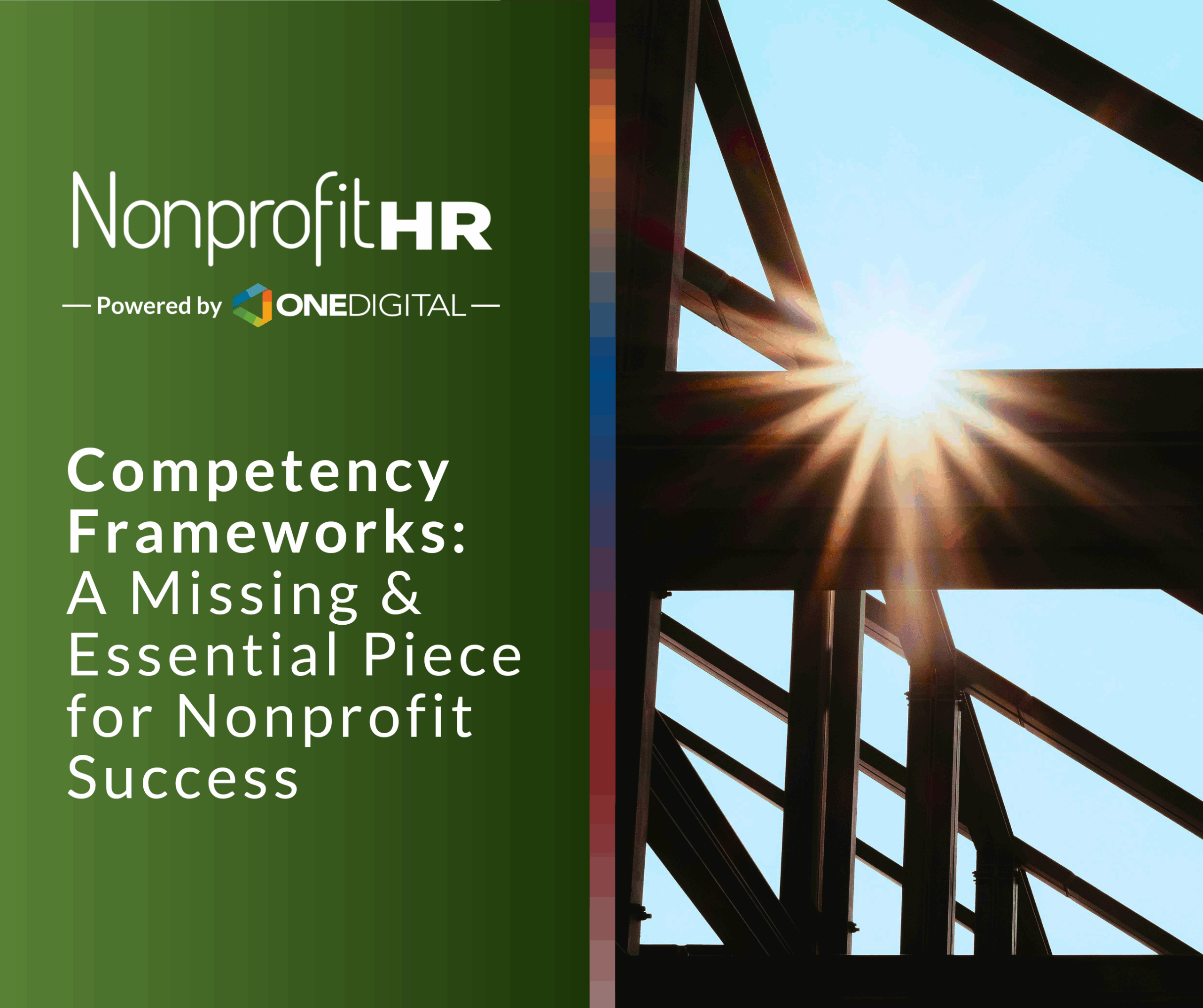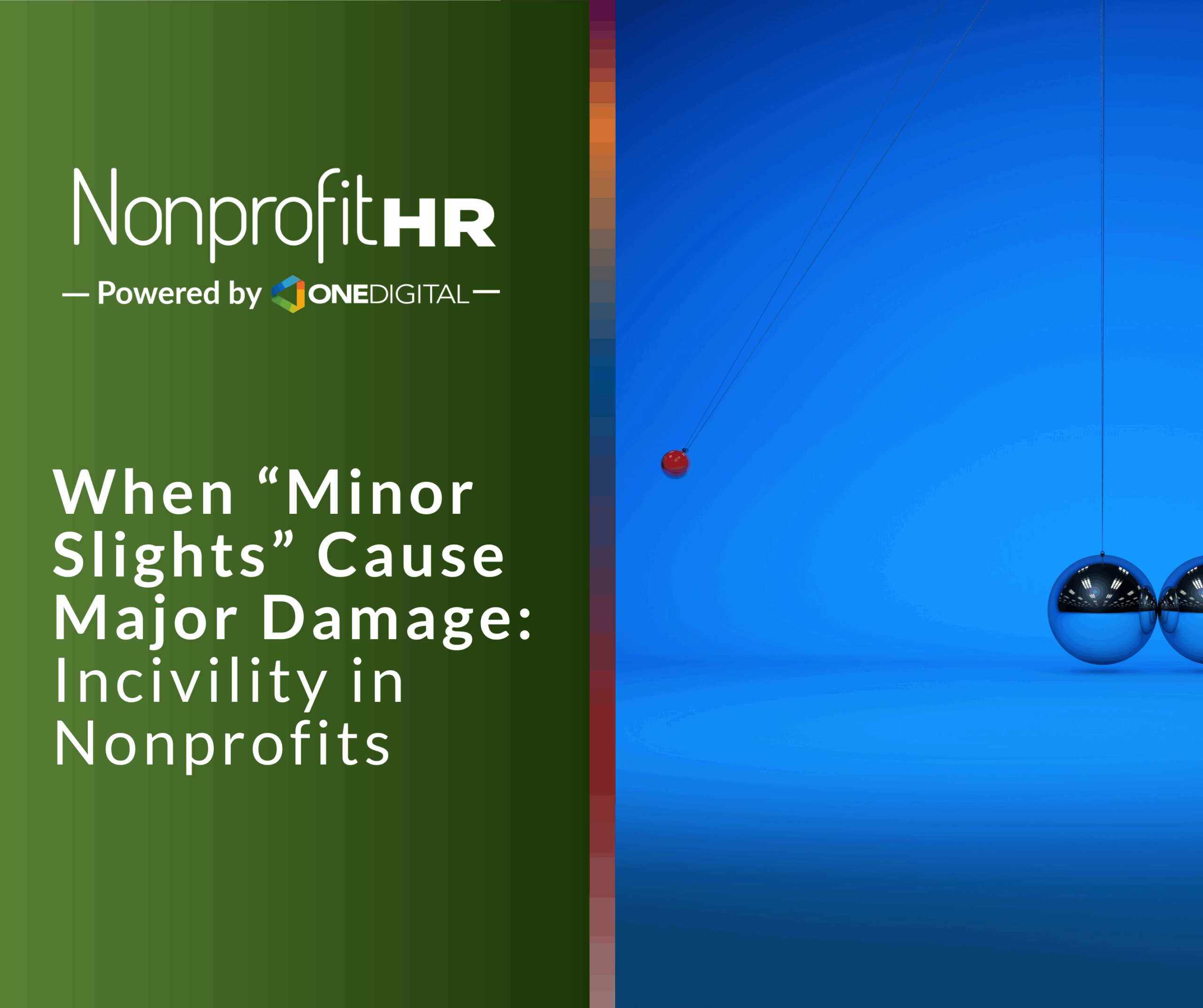WTOP: 5 ways nonprofits can…
National news organization NPR recently found itself in the midst of a crisis as the outlet’s top news executive was forced to resign due to sexual harassment claims, proving that even the social sector is not immune to harassment scandals. And at nonprofit organizations, the fallout from harassment might be even greater than it is at for-profits. Nonprofit organizations are expected to practice what they preach when it comes to social issues, and even a seemingly minor harassment scandal can lead to the loss of major donor dollars, constituent support and valuable employees.
Your organization must not only prepare to handle cases of harassment if and when they occur, but also proactively work to prevent harassment from happening in the first place. Nonprofit human resources professionals have the opportunity––and responsibility––to take the lead in preventing harassment and advocating for and protecting its victims. Take action now, not just because the reputation of your organization is on the line, but because it is simply the right thing to do.
Nonprofit HR professionals must take the lead in preventing workplace harassment and protecting its victims. #HRCaresToo #nonprofit Share on XWhat is harassment?
If your organization hopes to make meaningful progress on harassment prevention, you must first understand it. Though sexual harassment has taken center stage recently thanks to a bevy of scandals in Hollywood, Washington and the corporate world, workplace harassment covers much more than sexual harassment. The Equal Employment Opportunity Commission (EEOC) defines harassment as a form of employment discrimination and as “unwelcome conduct that is based on race, color, religion, sex (including pregnancy), national origin, age (40 or older), disability or genetic information.” State laws may broaden that definition.
According to data from an ABC News/Washington Post poll, one in four women and one in 10 men report experiencing sexual harassment in the U.S. workplace. However, only 25 to 33 percent of those harassed at work actually report it. Even if you don’t think your nonprofit has a harassment problem, it is entirely possible that members of your staff have experienced harassment and felt unable or unwilling to speak up.
Employees aren’t the only parties you need to think about when working to address harassment. Volunteers have the right to sue a nonprofit if they’ve experienced harassment while working with your organization, as do board members.
Here’s how your organization can begin to create a culture where harassment is not perpetrated, tolerated or ignored:
1. Identify your organization’s values and adhere to them
Consider your organization’s mission and the core values that will attract and retain the talent you need to drive that mission forward. Does your organization value work ethic? Transparency? Equality? Respect? Do your employees and volunteers know that succeeding at your organization means adhering to those values at all times? Or is there a disconnect between the values your organization says it stands for and those exemplified by management and staff?
A cultural needs assessment can help leadership identify whether your workforce understands and is acting on your organization’s core values, especially those that dissuade unwelcome verbal or physical conduct. If gaps between values and behaviors are identified, a cultural needs assessment can also help you identify steps to build a safer and more respectful culture for all.
2. Create a clear policy about what is and is not accepted in the workplace
Without a clear anti-harassment policy, employees may not fully understand how to report harassment incidents, what they can expect once workplace harassment is reported, or even whether an incident someone experienced was truly harassment.
Your organization’s anti-harassment policy should seek to eliminate confusion and protect those who report what they perceive as harassment. To ensure serious offenses are not written off as mere annoyances, your organization’s official anti-harassment policy should define what constitutes harassment, the individuals and conduct covered by the policy, how to report an incident of harassment, how employees will be protected from retaliation and how perpetrators will be disciplined and/or terminated, should that be the appropriate course of action.
SHRM offers a sample anti-harassment policy your HR team can look to when drafting a policy for your organization, and Nonprofit HR’s Project-Based Consulting practice can also help you develop a policy tailored to the specific needs of your organization.
3. Put harassment reporting systems in place for staff, volunteers and board members
Harassment can be just as prevalent among boards and volunteers as it is among staff. Each of these groups must be aware of your anti-harassment policy and of the procedures for reporting instances of harassment.
Reporting processes vary from organization to organization, but most nonprofits ask victims of harassment to discuss complaints with their immediate supervisor, who will then report it to the HR department or to the Executive Director. At most workplaces, victims can also directly report incidences to HR. Then, the HR team, or the designated representative must thoroughly investigate the report and recommend any necessary consequences. The reporting process should involve thorough documentation and record keeping at all phases, as well as communication with the alleged harasser and the harassed about what to expect as the process moves forward.
Often, victims feel nervous or embarrassed about reporting workplace harassment, even to an objective third party like HR. To ensure that all employees––even those who are uncomfortable openly coming forward––are encouraged to speak up, consider implementing a simple, anonymous reporting tool like MySafeWorkplace or AllVoices.
Additionally, as Nonprofit HR CEO Lisa Brown Alexander noted in a recent interview with NPR on the topic of sexual harassment, organizations can consider utilizing an outsourced HR department to handle reports of harassment. Hiring an outside HR or law firm to investigate reports as a neutral third party can often improve staff trust in the process.
4. Train managers in how to properly deal with reports of harassment
Once reports are made, your managers and leaders must follow up with HR and HR must thoroughly investigate and take appropriate action to reprimand perpetrators. Consequences can vary, and they will depend on the results of the investigation following a report of a harassment. If an individual has committed an unprofessional or disrespectful act that does not constitute unlawful harassment, the individual may be counseled, suspended or given a probationary period. If an individual is found to have committed unlawful harassment, the likeliest outcome is termination or forced resignation. HR should train and counsel managers and other senior staff on how to manage employees who are facing disciplinary action for harassment but have not yet been terminated.
We noted above that as few as a quarter of harassment victims across sectors report incidents, and unfortunately, 75 percent of victims have also faced retaliation after they spoke up. In the public sector specifically, two-thirds of those who reported mistreatment indicated they faced retaliation. HR has both a professional and ethical obligation to remain impartial and take an active role in ensuring managers don’t question a victim’s report, make assumptions or punish the victim in any way for speaking up.
5. Train staff and volunteers in harassment prevention, including bystander intervention
Make it clear that everyone is responsible for preventing harassment in the workplace, and encourage staff to speak up if they recognize a problem, even if the behavior is not directed toward them. To ensure members of your team do not feel discouraged from reporting secondhand instances of harassment, emphasize both confidentiality and the importance of protecting fellow team members.
We recommend providing mandatory workplace harassment training for every single employee. Nonprofit HR offers a course designed to help nonprofits like yours bolster anti-harassment policies and properly address reports of harassment in the workplace. In this course, we discuss what a civil workplace looks like, how to achieve workplace stability and any legal and compliance obligations related to harassment.
If you have any questions about how your organization can do more to build a culture that actively prevents harassment and protects its victims, please don’t hesitate to get in touch with us. There is simply no time to waste when it comes to addressing this important issue.
We also want to hear your thoughts on the role HR must play in protecting and advocating for victims of harassment. Join us on Twitter using the hashtag #HRCaresToo to continue the conversation.





























